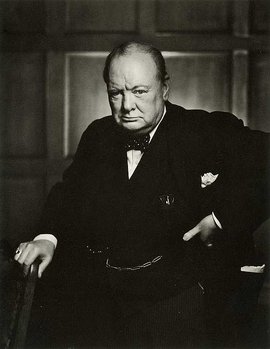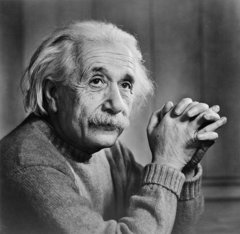Yousuf Karsh
|
|
Karsh.jpg
Yousuf Karsh (December 23, 1908 – July 13, 2002) was one of the world’s most renowned portrait photographers.
| Contents [hide] |
Biography
Karsh was born in Mardin, Turkey. At the age of 14, he fled with his family to the safety of Syria to escape persecution after the Armenian Genocide six years earlier. Two years later, young Yousuf was sent to live with his uncle George Nakash, a photographer in Sherbrooke, Quebec, Canada. Karsh attended school there briefly and assisted in his uncle’s studio. Nakash saw great potential in his nephew and, in 1928, arranged for Karsh to apprentice with portrait photographer John Garo of Boston.
YousufKarsh1991.jpg
Karsh returned to Canada four years later, eager to make his mark. He established a studio on Sparks Street in Ottawa, close to Canada’s seat of government. Eventually, the Canadian Prime Minister, Mackenzie King, discovered the yet unknown Karsh and took a liking to him. The Prime Minister arranged introductions for Karsh with visiting dignitaries, whom he convinced to sit for portraits. His work was attracting the attention of varied celebrities, but Karsh’s own place in history was sealed in 1941 when Winston Churchill came to Ottawa.
The image of Churchill that he created then brought the photographer to international prominence, and is claimed to be the most reproduced photographic portrait in history. Of the 100 people named by the International Who’s Who [2000] as the most notable people of the century, Karsh had photographed 51. Karsh himself was the only Canadian to make the list.
In 1967, he was made an Officer of the Order of Canada and in 1990 was promoted to Companion.
On his passing in 2002, he was interred in Notre Dame Cemetery in Ottawa, Ontario.
Work
Karsh was a master in the use of studio lights. One of Karsh's distinctive practices was lighting the subject's hands separately. He photographed many of the great and celebrated personalities of his generation. Journalist George Perry wrote in London's Sunday Times that "when the famous start thinking of immortality, they call for Karsh of Ottawa."
Karsh had a gift for capturing the essence of his subject in the instant of his portrait. As Karsh wrote of his own work in Karsh Portfolio in 1967, "Within every man and woman a secret is hidden, and as a photographer it is my task to reveal it if I can. The revelation, if it comes at all, will come in a small fraction of a second with an unconscious gesture, a gleam of the eye, a brief lifting of the mask that all humans wear to conceal their innermost selves from the world. In that fleeting interval of opportunity the photographer must act or lose his prize."
YousefKarshselfportrait.jpg
Karsh said "My chief joy is to photograph the great in heart, in mind, and in spirit, whether they be famous or humble." His work is in the permanent collections of the National Gallery of Canada, New York's Museum of Modern Art and Metropolitan Museum of Art, George Eastman House International Museum of Photography and Film, Bibliothèque nationale de France, the National Portrait Gallery in London, the National Portrait Gallery of Australia and many others. Library and Archives Canada holds his complete collection, including negatives, prints and documents. His photographic equipment was donated to Ottawa's Museum of Science and Technology.
Karsh published 15 books of his photographs, which include brief descriptions of the sessions, during which he would ask questions and talk with his subjects to relax them as he composed the portrait. Some famous subjects photographed by Karsh were Albert Einstein, Albert Schweitzer, Alexander Calder, Andy Warhol, Audrey Hepburn, Clark Gable, Dwight Eisenhower, Ernest Hemingway, Fidel Castro, Jacqueline Kennedy, Frank Lloyd Wright, General Pershing, George Bernard Shaw, Georgia O'Keeffe, Grey Owl, Helen Keller, Humphrey Bogart, Indira Gandhi, John F. Kennedy, Laurence Olivier, Madame Chiang Kai-Shek, Muhammad Ali, Pablo Casals, Pandit Nehru, Paul Robeson, Peter Lorre, Picasso, Pierre Elliott Trudeau, Princess Elizabeth, Princess Grace, Prince Rainier of Monaco, Robert Frost, Ruth Draper, Field Marshal Lord Alanbrooke and, arguably his most famous portrait subject, Winston Churchill.

The story is often told of how Karsh created his famous portrait of Churchill during the early years of World War II. Churchill, the British prime minister, had just addressed the Canadian Parliament and Karsh was there to record one of the century's great leaders. "He was in no mood for portraiture and two minutes were all that he would allow me as he passed from the House of Commons chamber to an anteroom," Karsh wrote in Faces of Our Time. "Two niggardly minutes in which I must try to put on film a man who had already written or inspired a library of books, baffled all his biographers, filled the world with his fame, and me, on this occasion, with dread."
Churchill marched into the room scowling, "regarding my camera as he might regard the German enemy." His expression suited Karsh perfectly, but the cigar stuck between his teeth seemed incompatible with such a solemn and formal occasion. "Instinctively, I removed the cigar. At this the Churchillian scowl deepened, the head was thrust forward belligerently, and the hand placed on the hip in an attitude of anger."
The image captured Churchill and the England of the time perfectly — defiant and unconquerable. Churchill later said to him, "You can even make a roaring lion stand still to be photographed." As such, Karsh titled the photograph, The Roaring Lion.
However, Karsh's favourite photograph was the one taken immediately after this one where Churchill's mood had lightened considerably and is shown much in the same pose, but smiling.
Publications
- Faces of destiny; portraits by Karsh (1946)
- Canada : as seen by the camera of Yousuf Karsh and described in words by John Fisher (1960)
- In search of greatness; reflections of Yousuf Karsh (1962)
- Karsh portfolio (1967)
- Faces of Our Time (1971)
- Karsh portraits (1976)
- Karsh Canadians (1978)
- Karsh: a fifty-year retrospective (1983)
- Karsh: American legends (1992)

